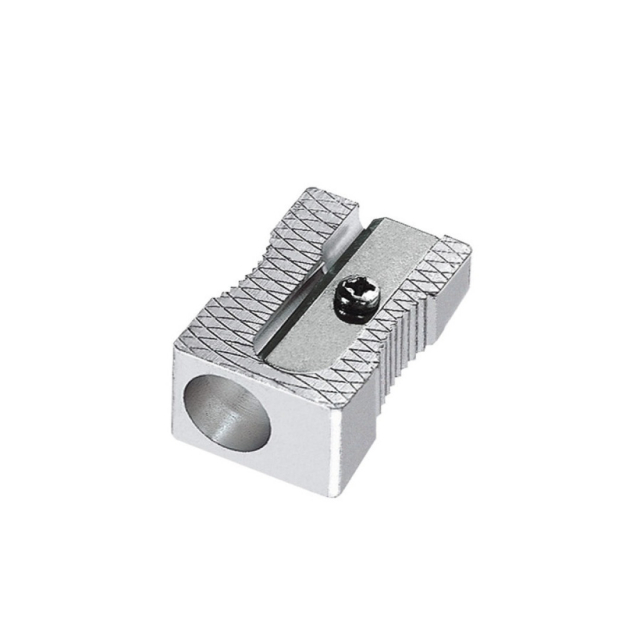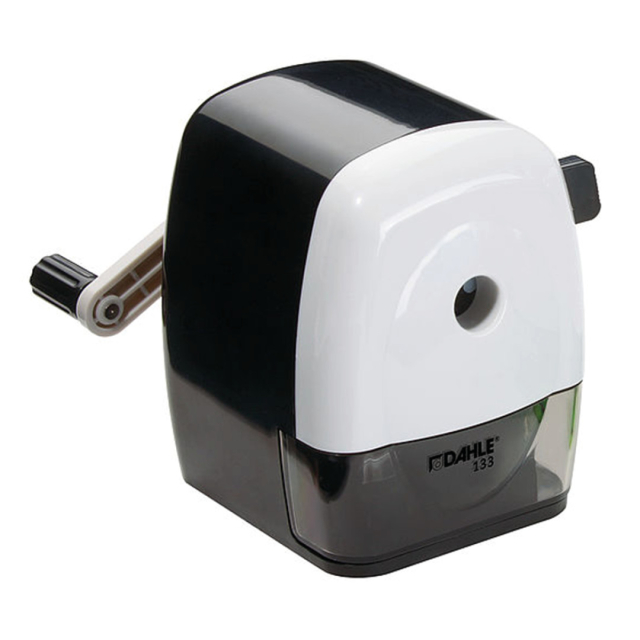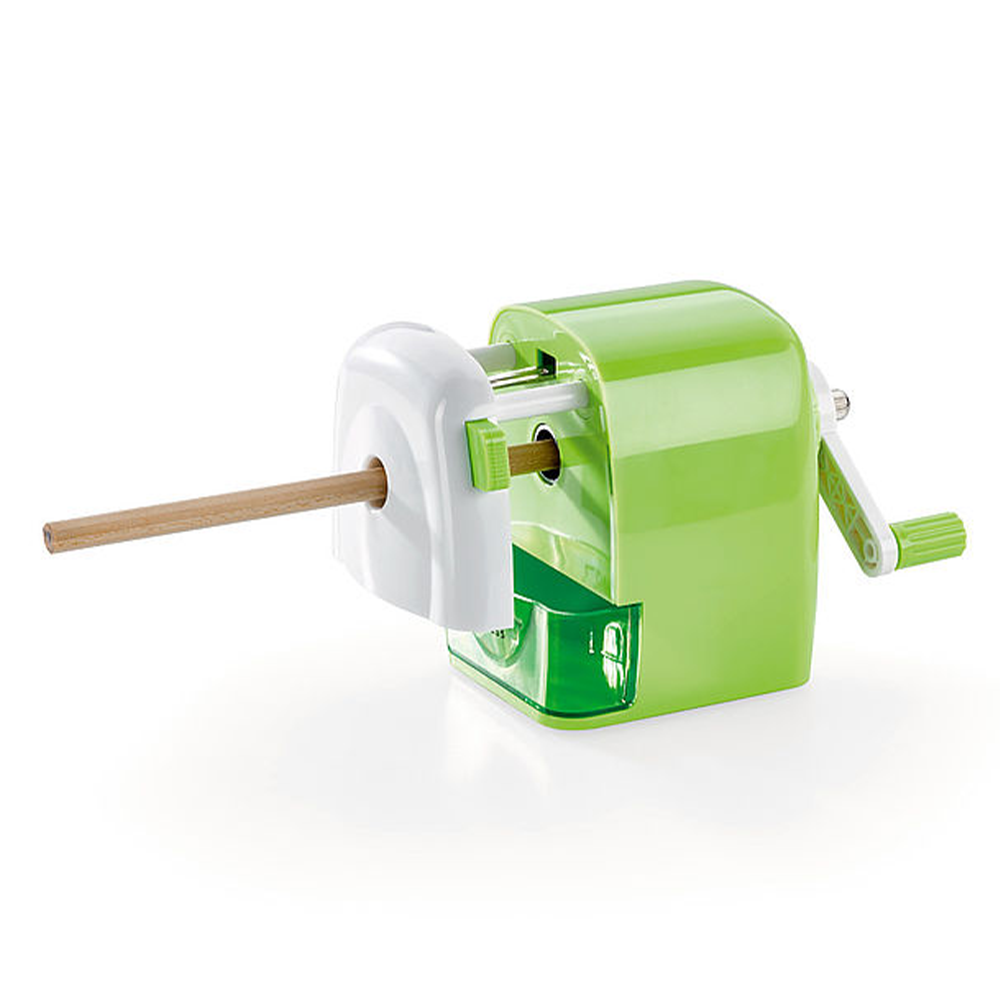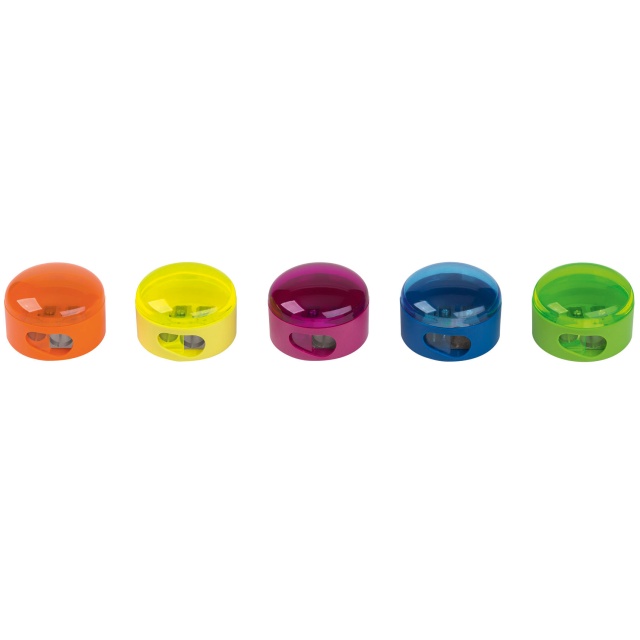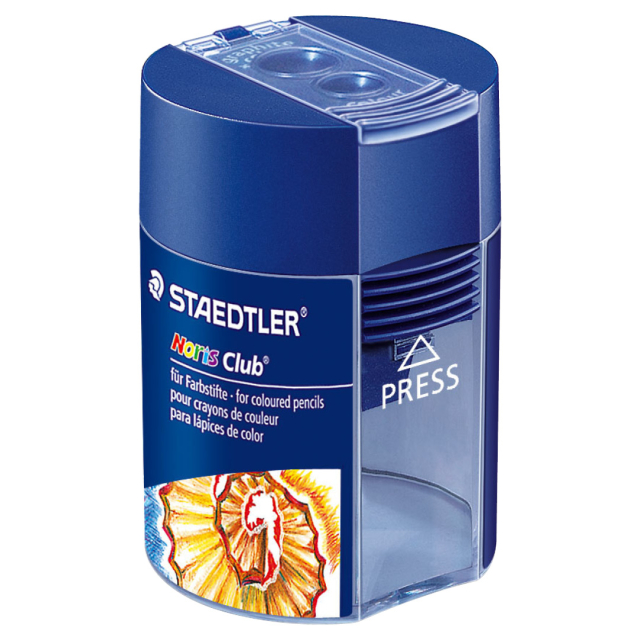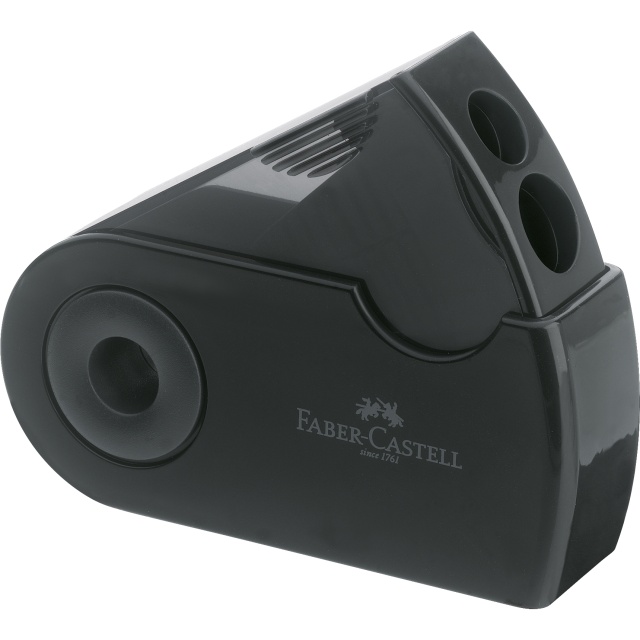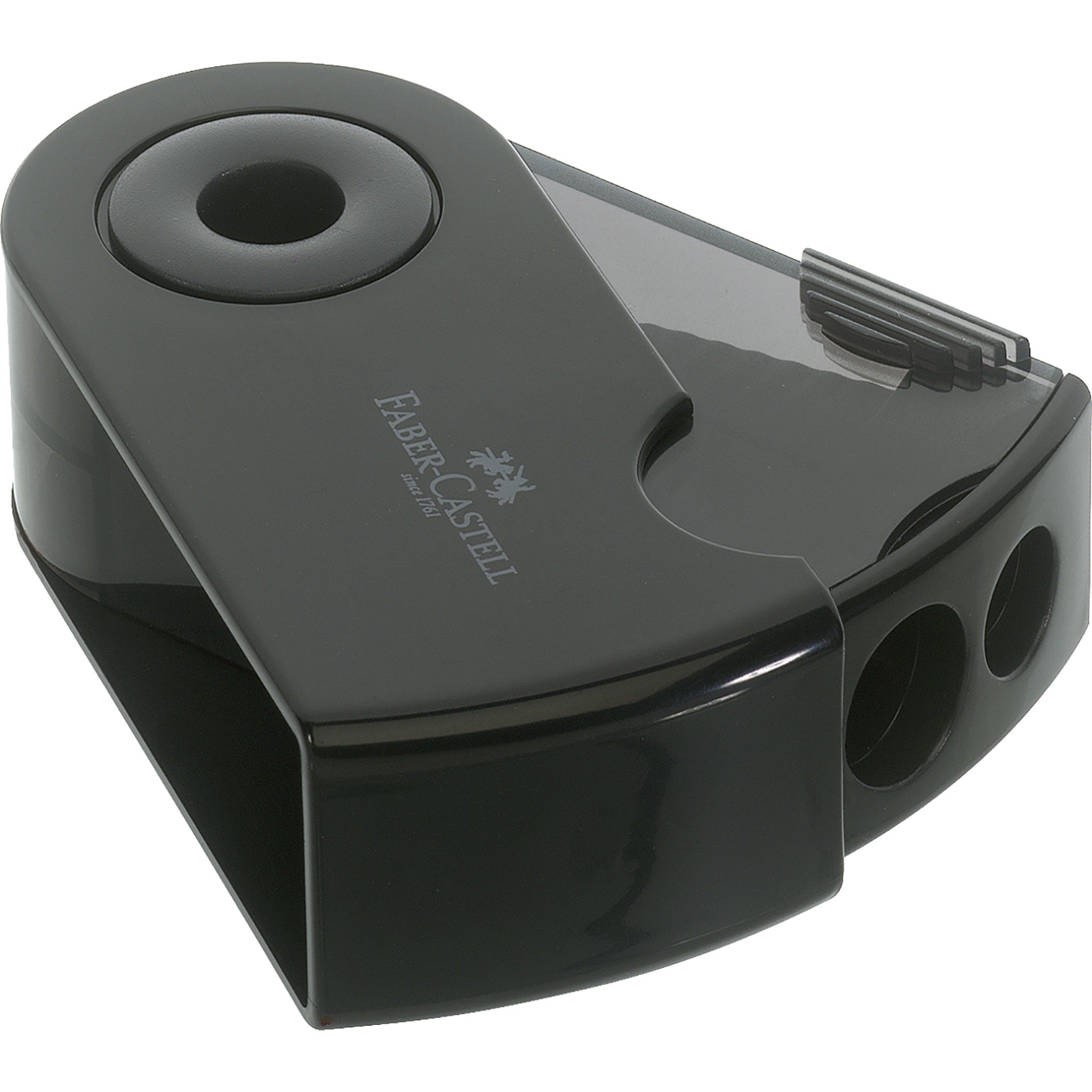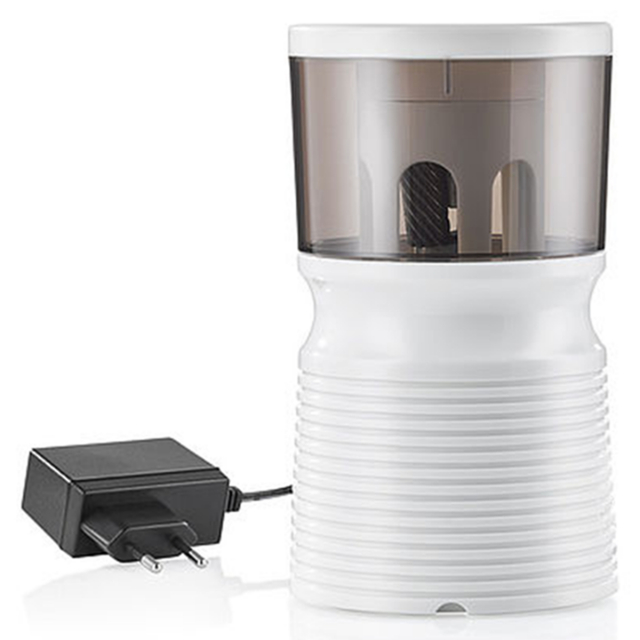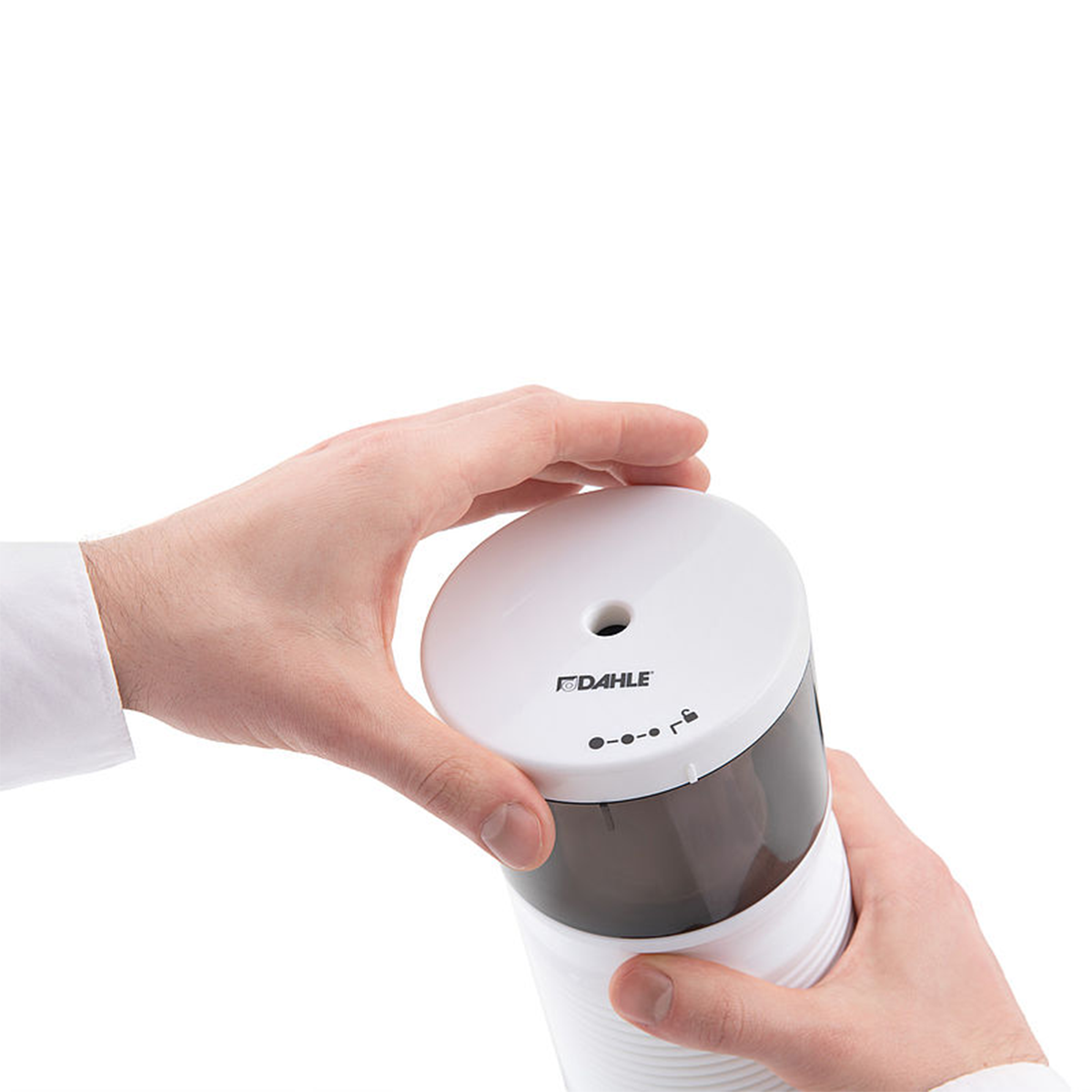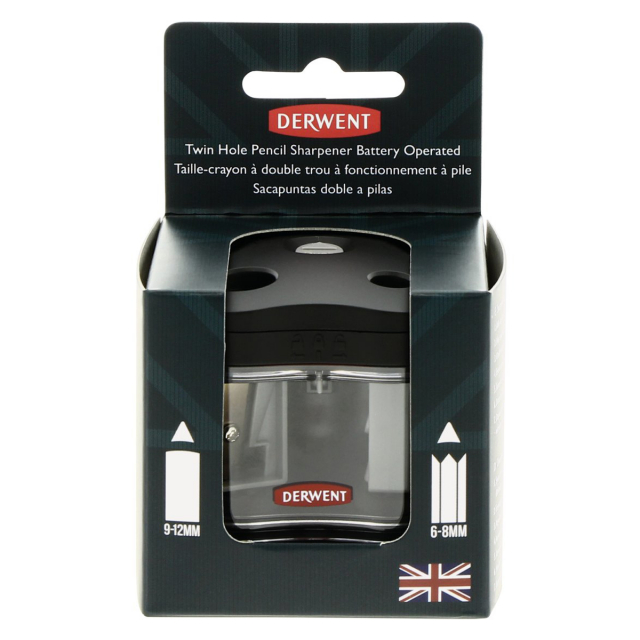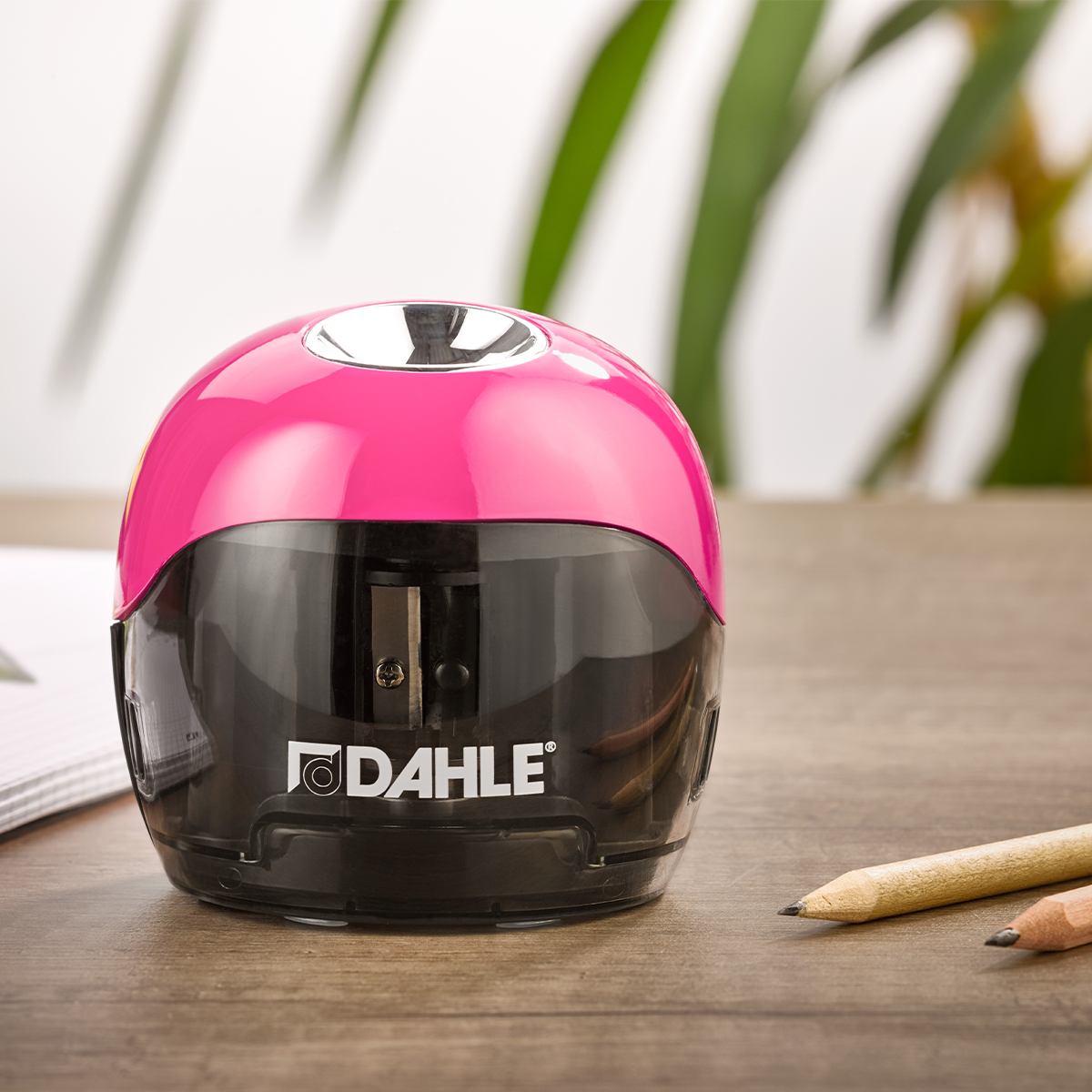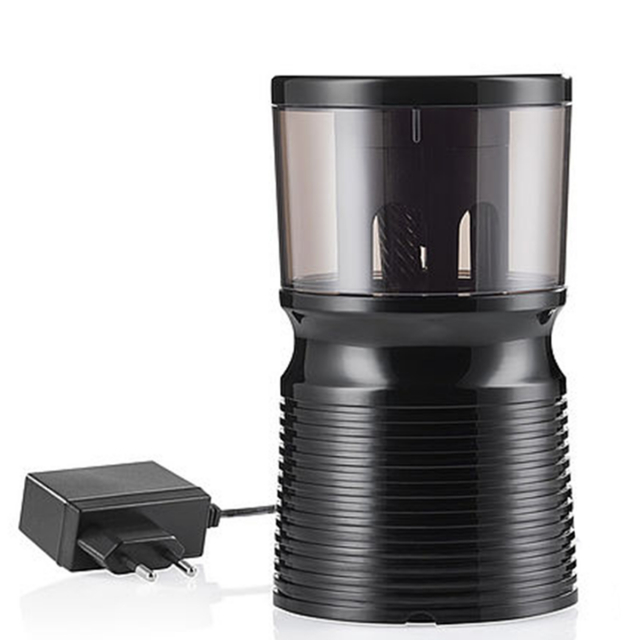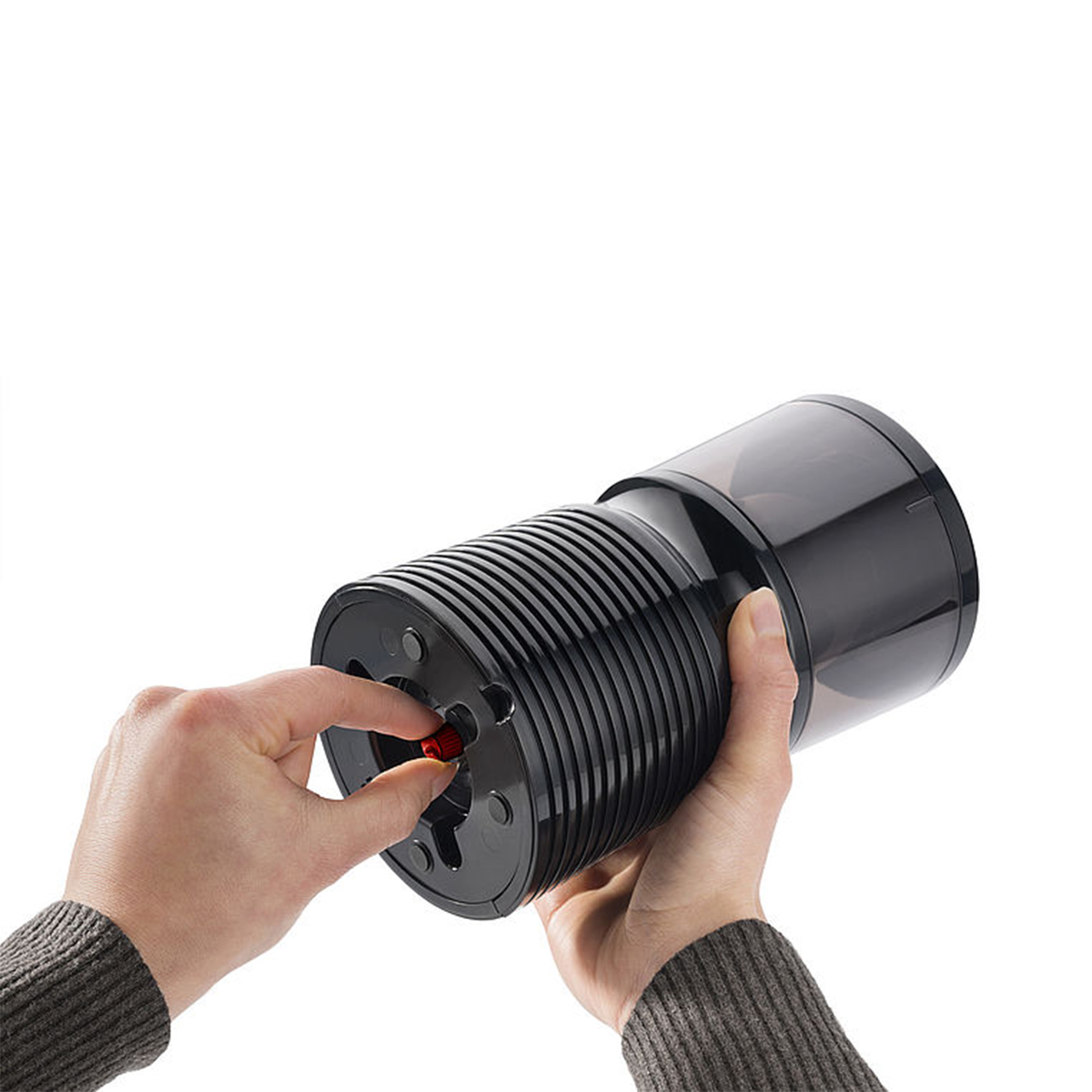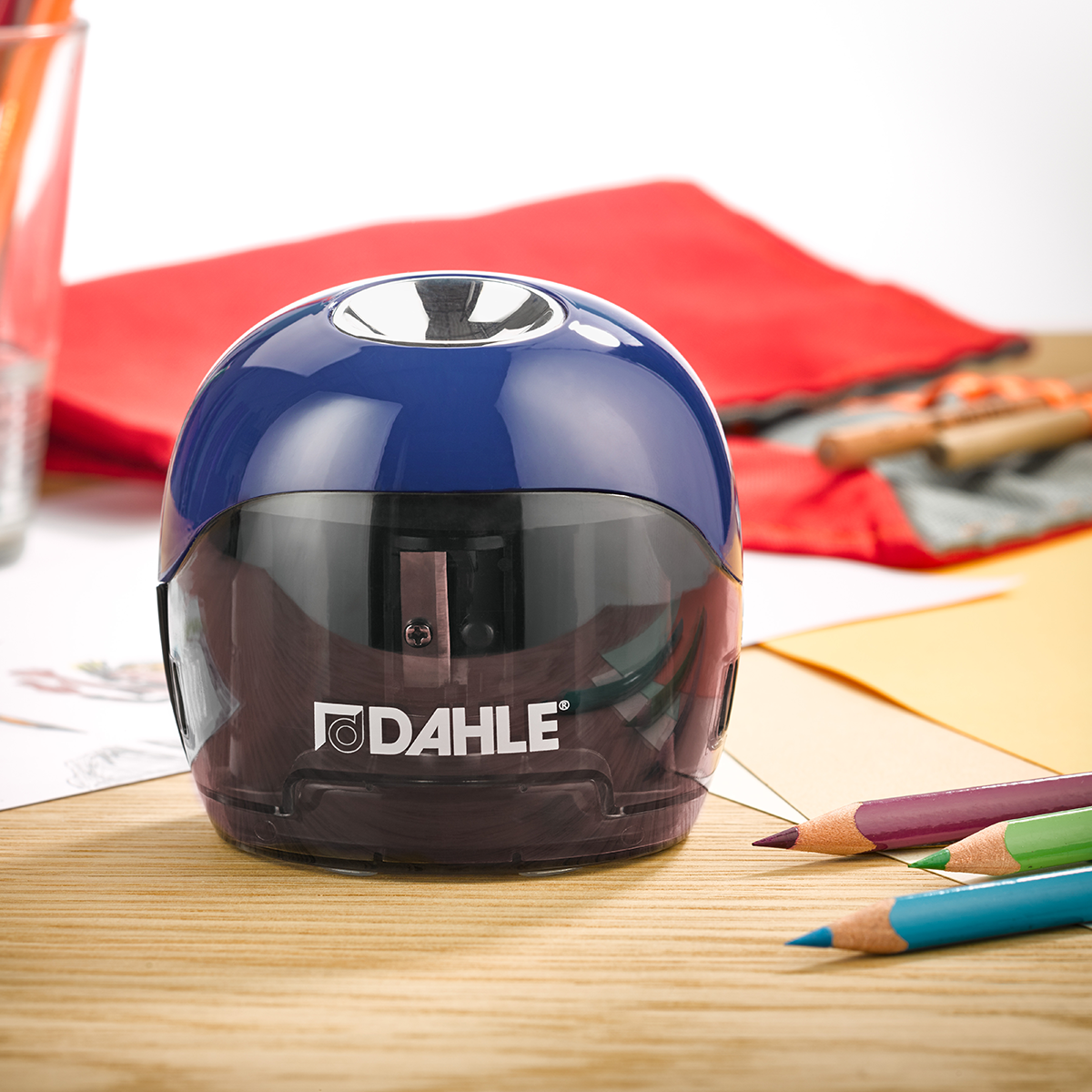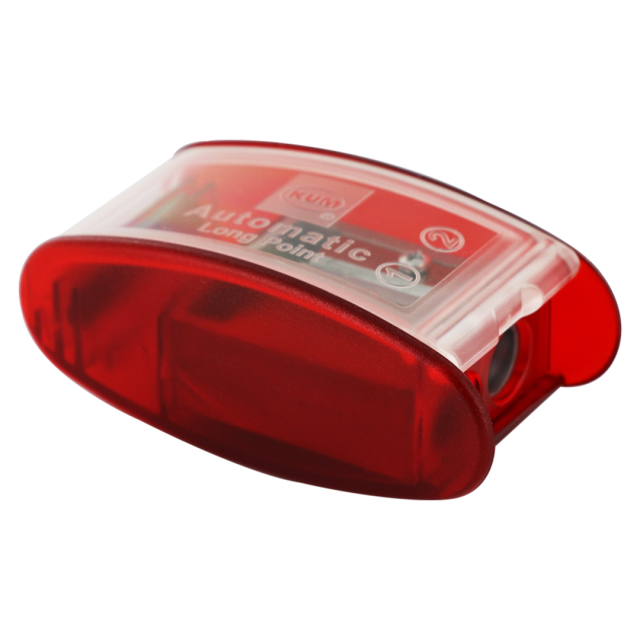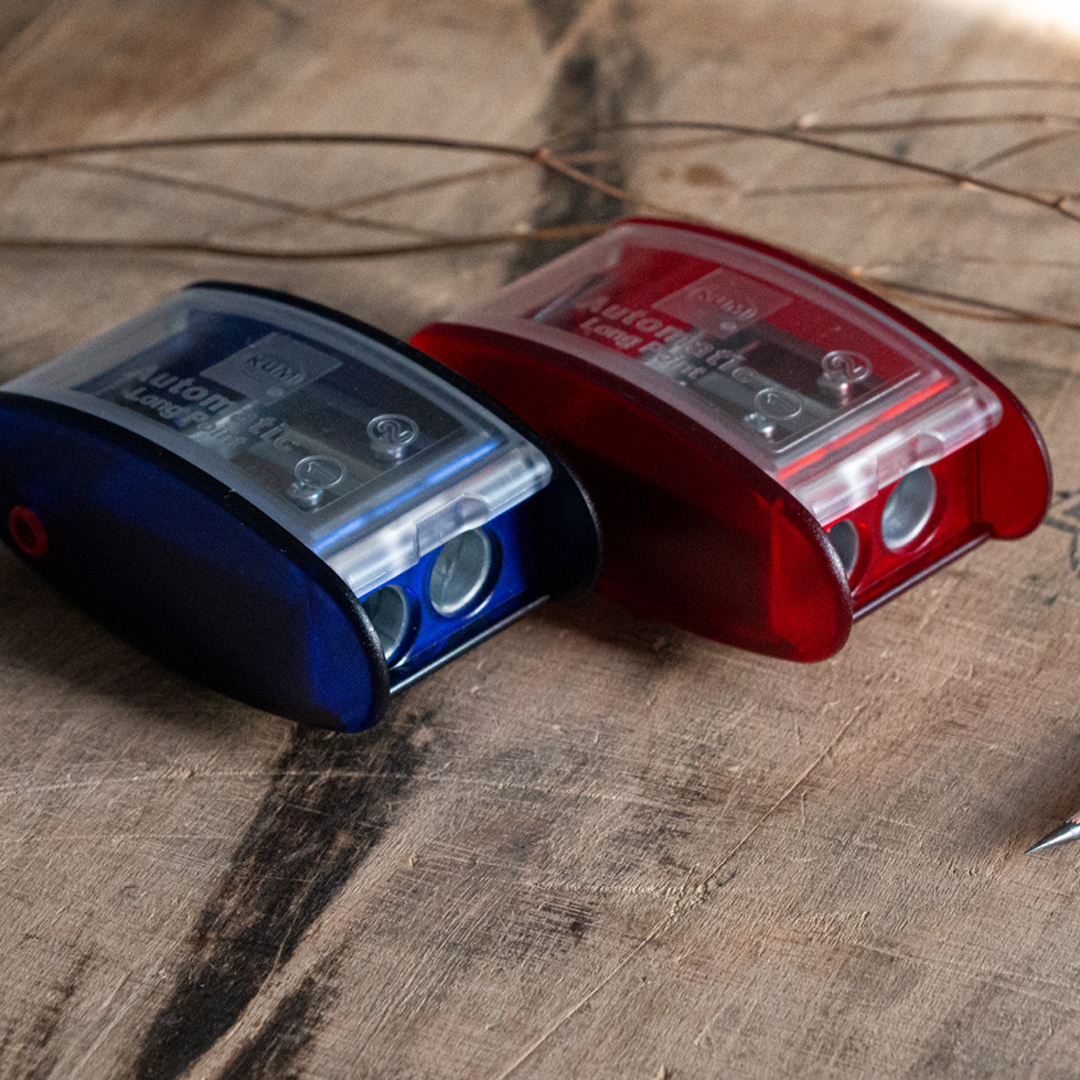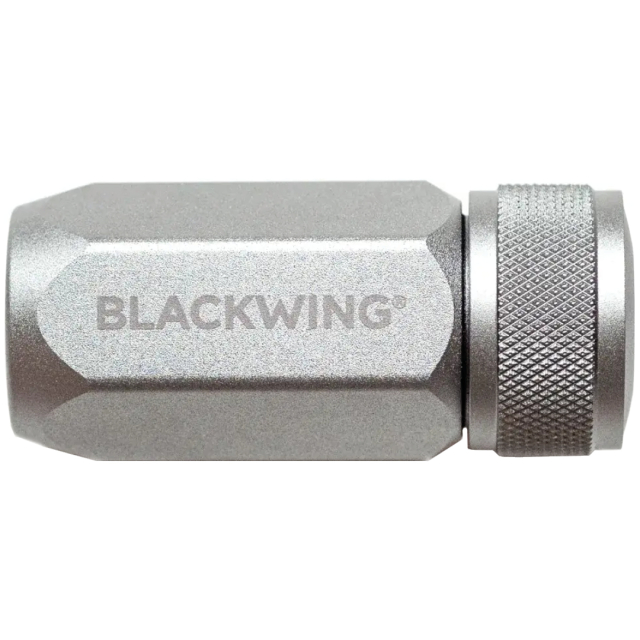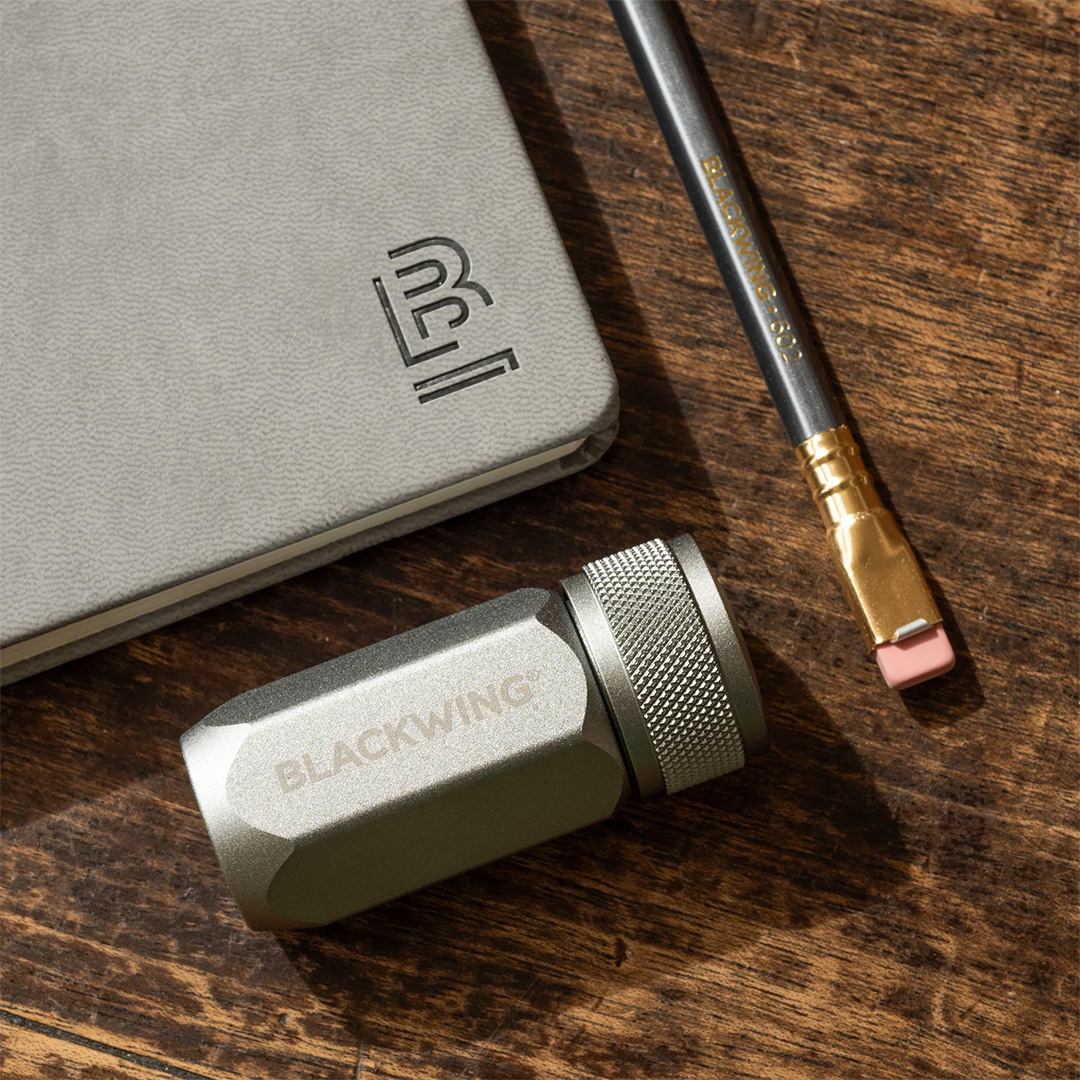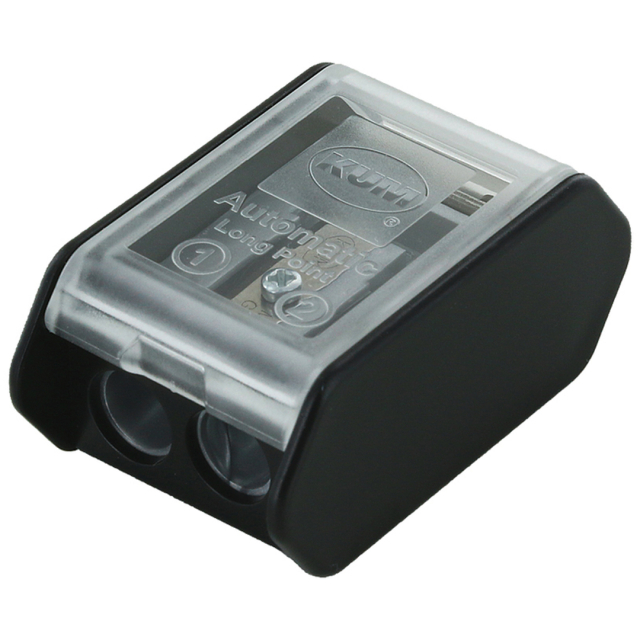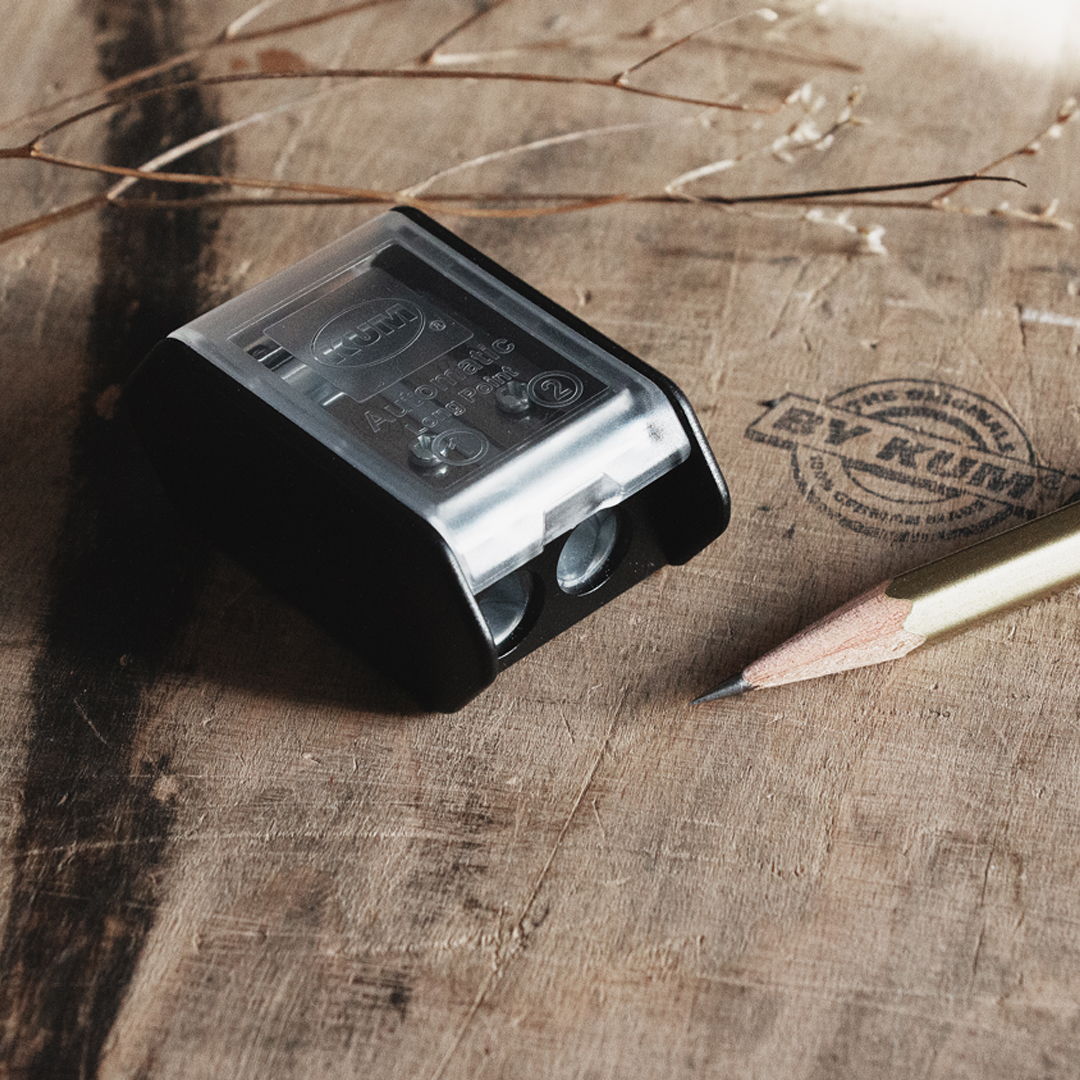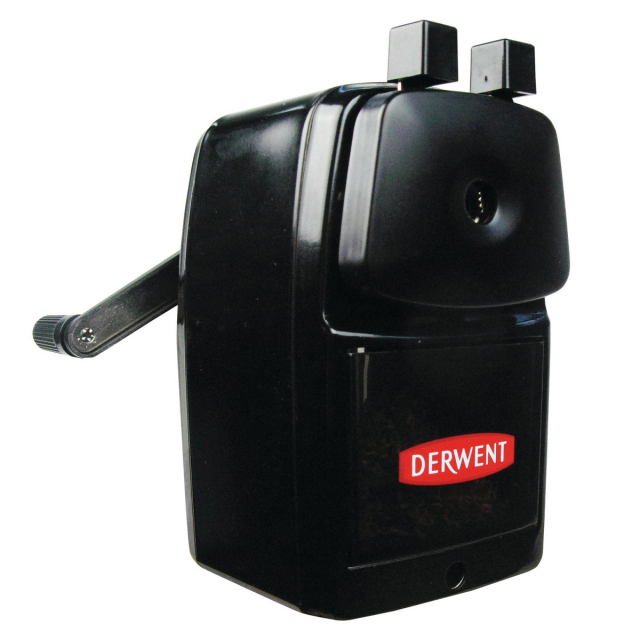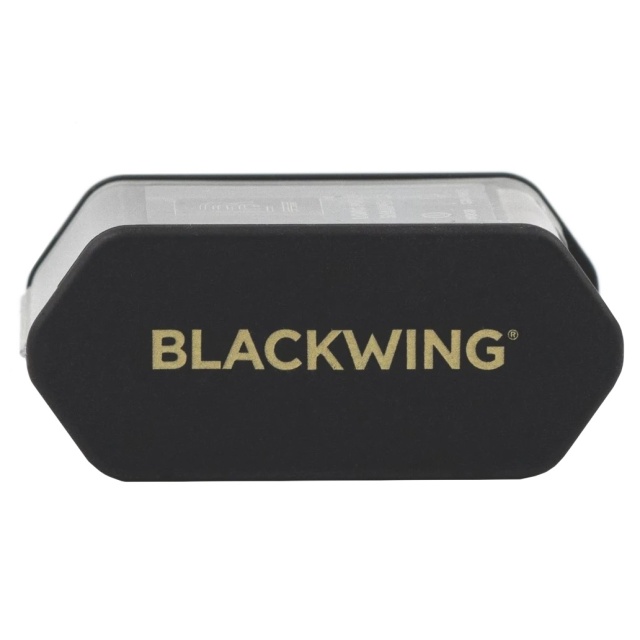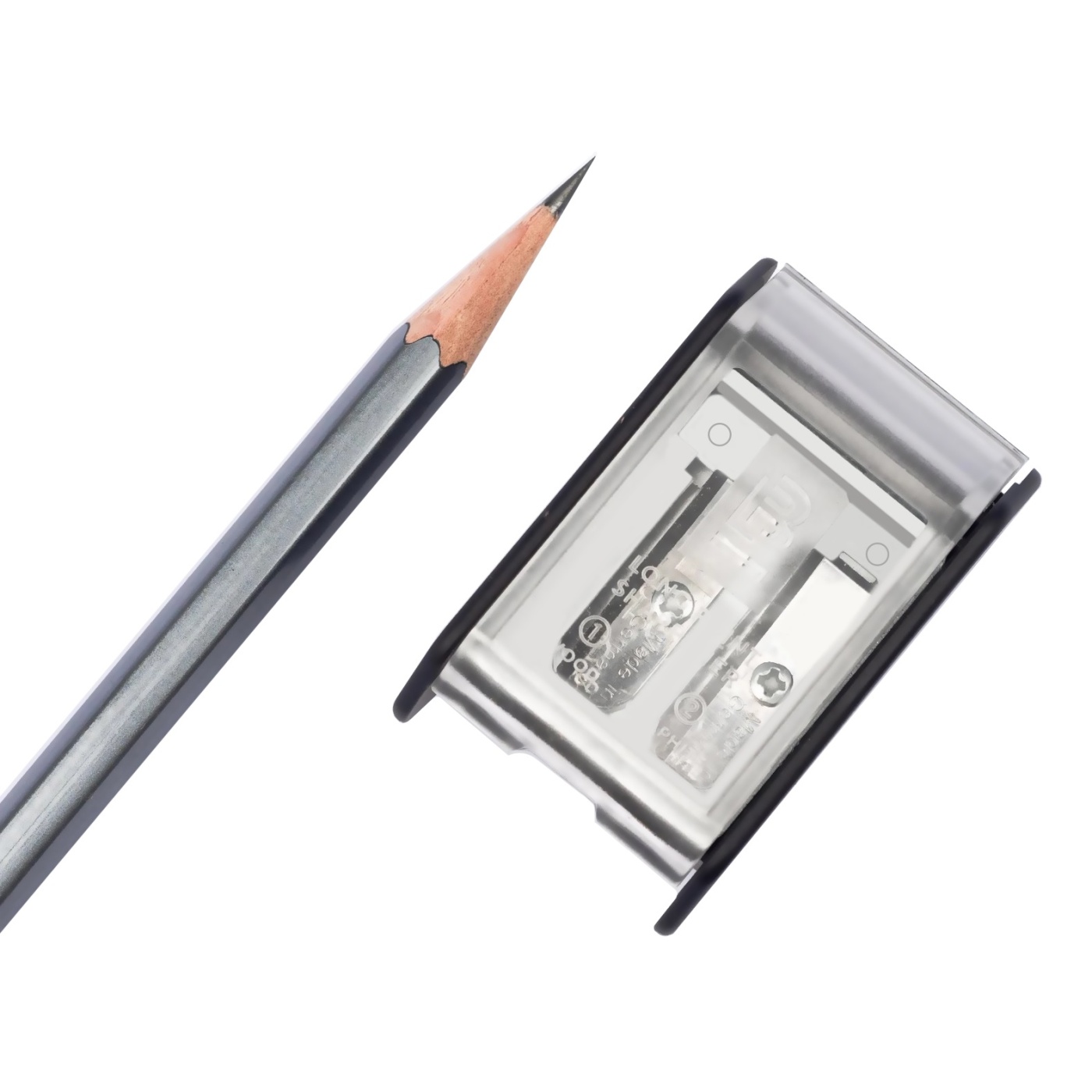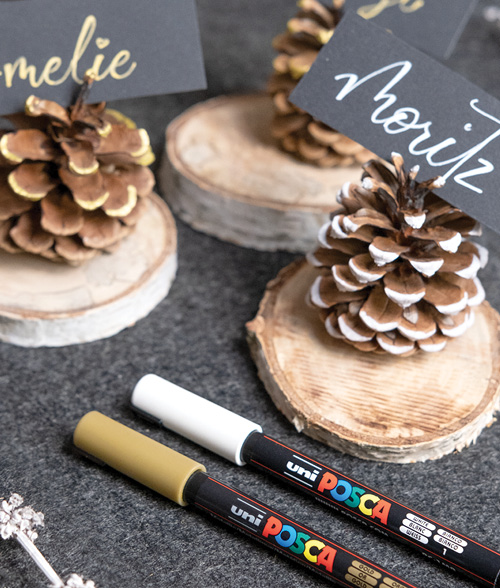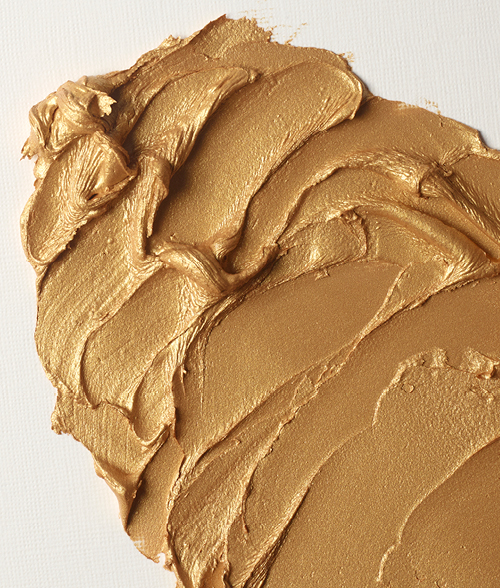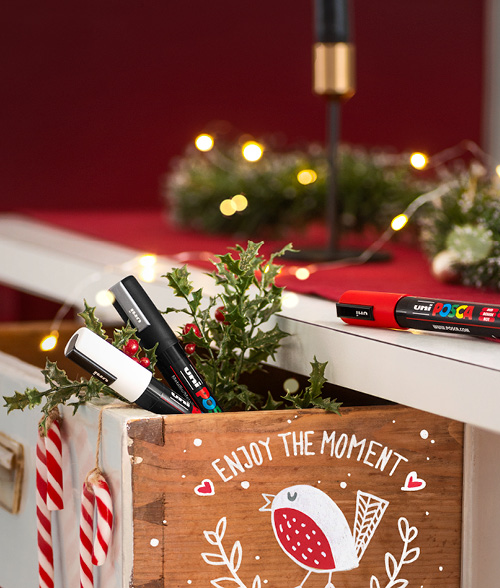What kinds of pencil sharpeners are there, and does it really matter if you choose an electric or a manual one? How do you know which sharpener hole fits the pencil you're holding? It might sound like a small detail, but when it comes to creative work, the right tool can make a big difference. In this guide, we go through everything you need to know about pencil sharpeners.
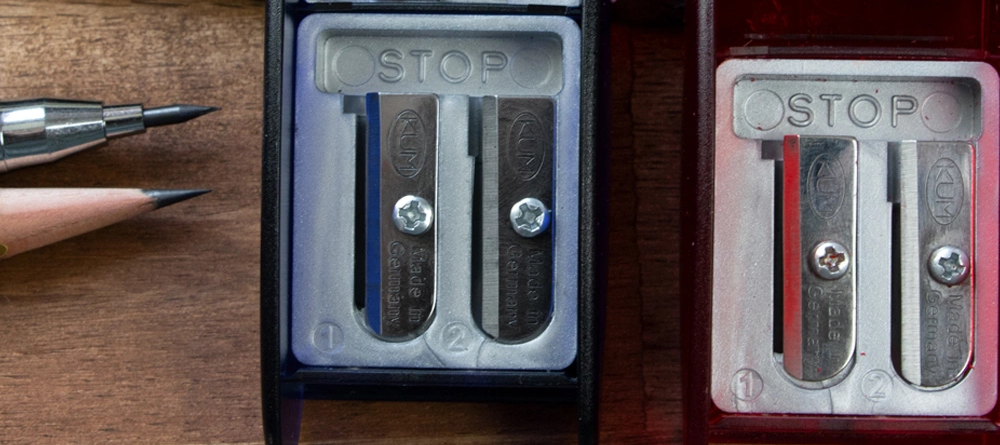
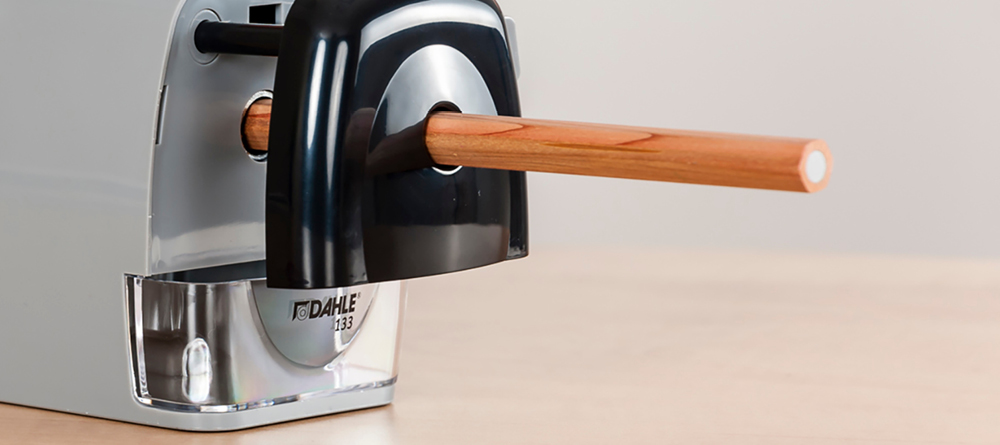
There are two types of pencil sharpeners
Blade sharpeners
A blade sharpener is the classic and most well-known type of pencil sharpener. It works through a simple but effective system: you insert the pencil into a conical hole and rotate it. Inside the sharpener is a fixed blade that shaves off the wood and graphite as the pencil turns. The blade is mounted at a specific angle to produce a smooth tip. This is the type of sharpener most people recognise from school: simple, compact and reliable as long as the blade is sharp. There are also desktop blade sharpeners, which use the same blade principle but include a crank to assist with sharpening.
Cylinder sharpeners
A cylinder sharpener uses a more advanced but highly effective mechanism. Instead of a fixed blade, it features a rotating cylinder with spiral-shaped ridges. When you use the sharpener, the pencil is held in place while the cylinder, driven by a gear system, rotates around it. The spiral ridges gradually carve away the wood and graphite to produce a smooth and precise point. This method often provides more control and consistency than traditional blade sharpeners.
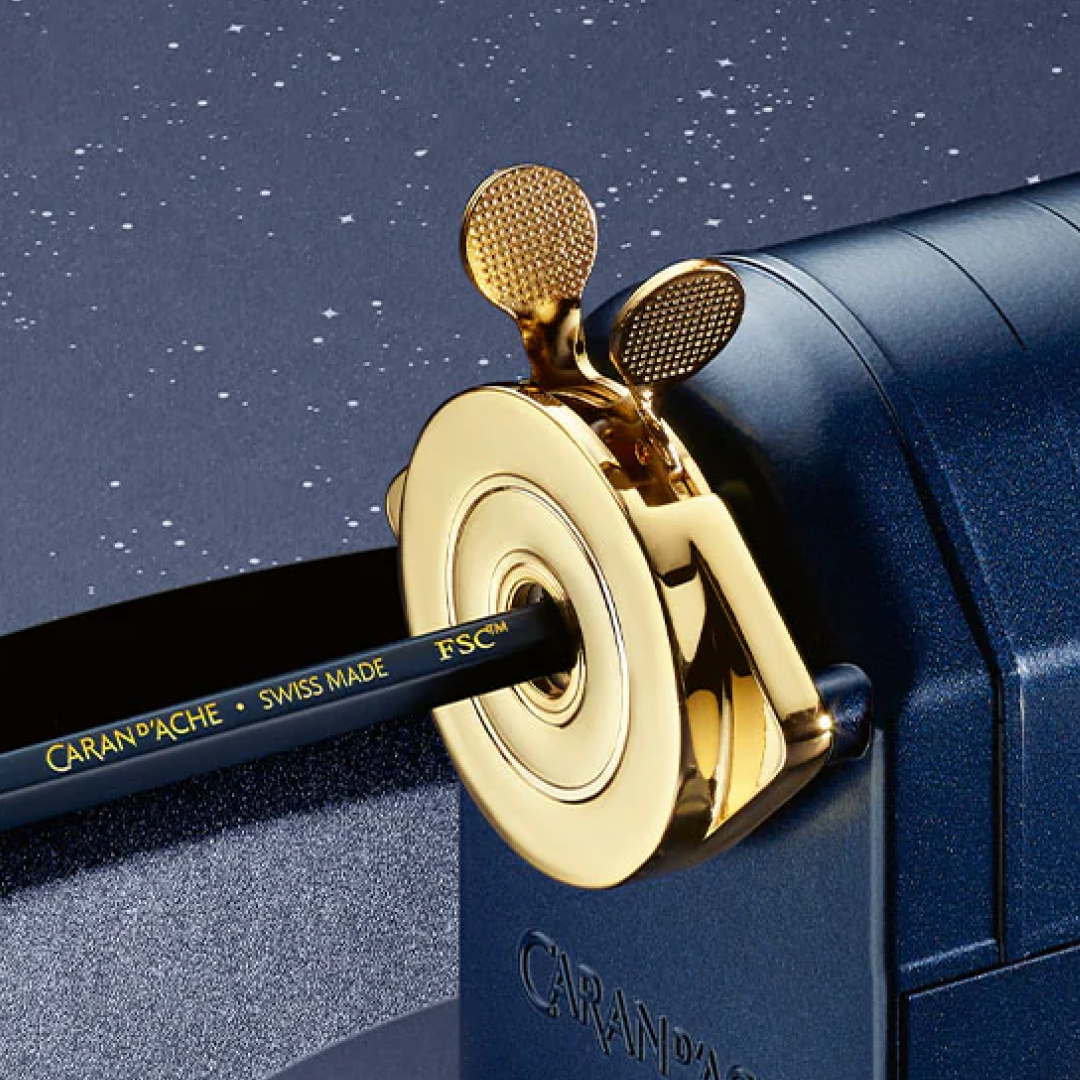
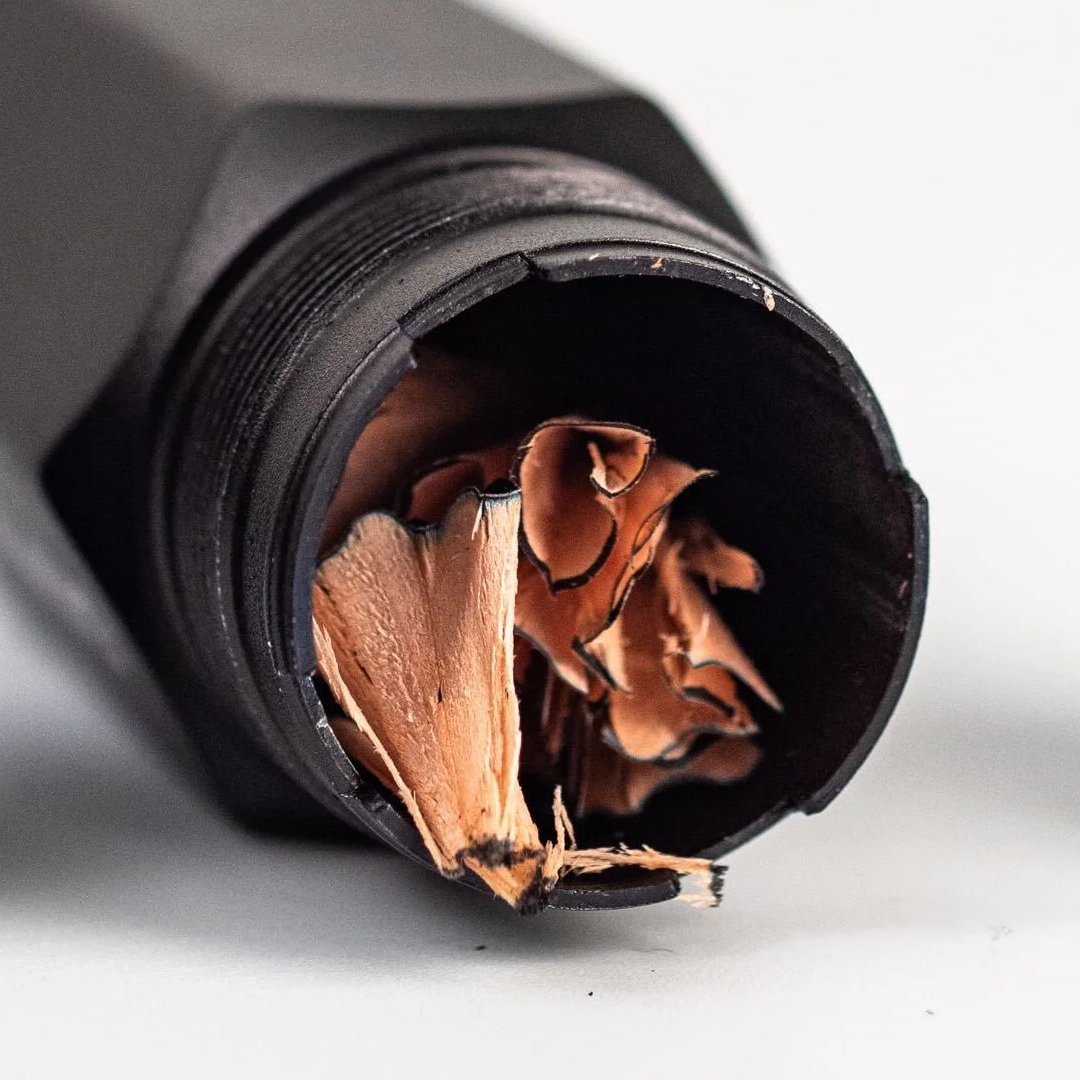
Pencil sharpeners with or without electricity?
Today, there are high-quality pencil sharpeners available in both manual and electric versions. The choice mainly depends on your lifestyle and budget. Let's take a closer look at the advantages of each type.
Manual pencil sharpeners
A manual pencil sharpener is the traditional option operated by hand. It is reliable, quiet and requires no power, which makes it ideal for classrooms and workplaces. There are many different manual models to choose from. In our selection, you'll find everything from small, affordable pocket sharpeners to luxurious desk-mounted designer models that add a touch of everyday elegance.
Electric pencil sharpeners
A good electric pencil sharpener can refine your pencil tip with the highest level of precision, beyond what is possible by hand. They are also fast and convenient, especially when you need to sharpen many pencils. The downside of electric sharpeners is that they can be noisy and bulky to carry. In our range, we offer both battery-powered and mains-powered sharpeners. For a truly worthwhile investment, we recommend pencil sharpeners from Dahle.
The size of the pencil determines the sharpener you need
When choosing a pencil sharpener, the diameter of your pencils plays a key role. However, you don't need to measure them precisely. It's usually enough to know whether they follow standard sizing or jumbo sizing.
Standard pencils
Most pencils follow the standard diameter of around 6 to 8 millimetres, including regular graphite pencils and most coloured pencils, even those with hexagonal barrels. For these, almost any standard sharpener will work perfectly.
Jumbo pencils
Pencils with a larger diameter of around 9 to 12 millimetres, often called jumbo pencils, require specially designed jumbo sharpeners. Product descriptions always indicate clearly if the sharpener is suitable for jumbo pencils or what diameter the sharpener hole supports. Pencils with unusual shapes, such as triangular or square barrels, may also require sharpeners with a larger opening.
Tip: If you use several types of pencils, it’s smart to invest in a sharpener with multiple holes in different sizes. Alternatively, choose an adjustable sharpener that can handle a wide range of tip dimensions. That way, you can sharpen both standard and non-standard pencils with the same tool.
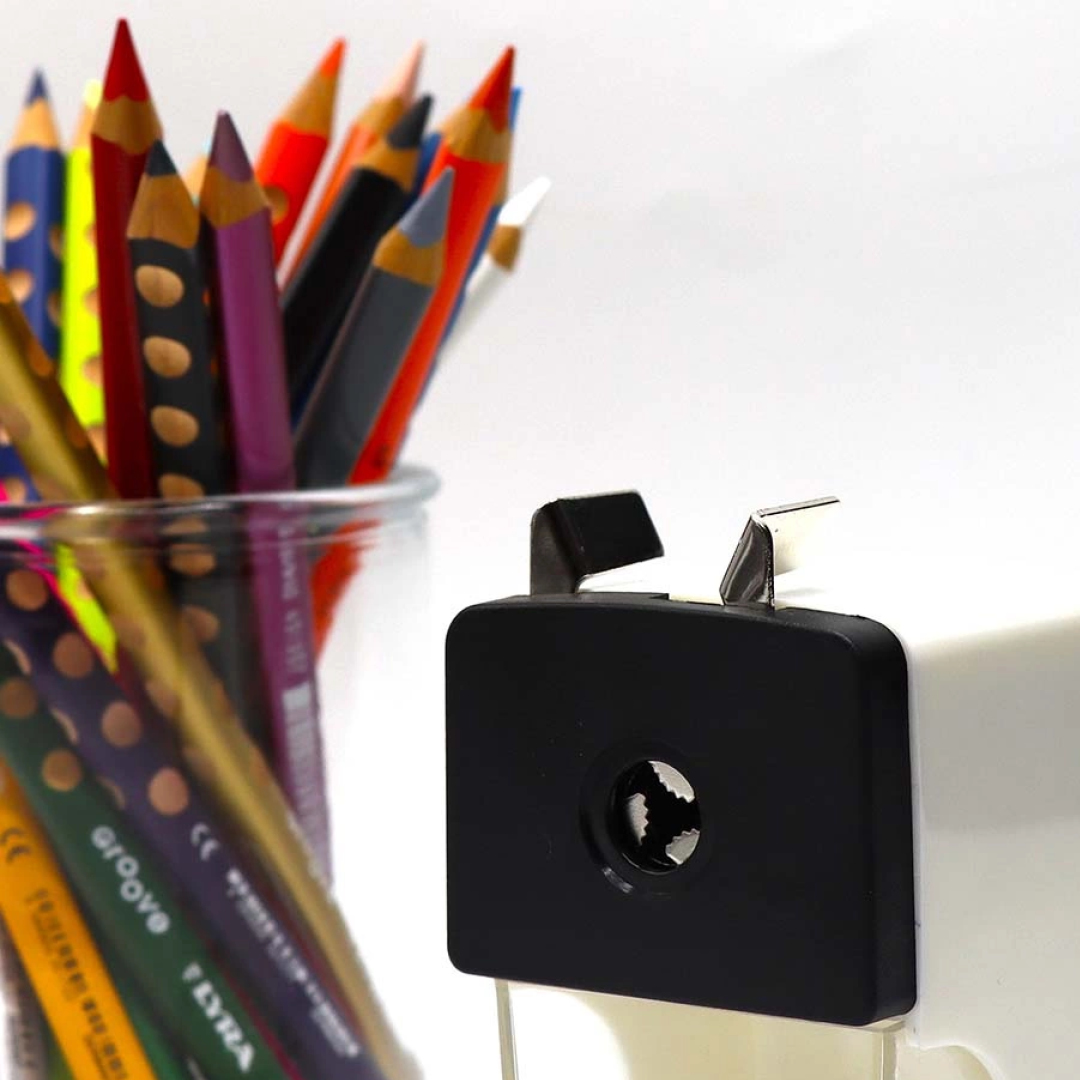
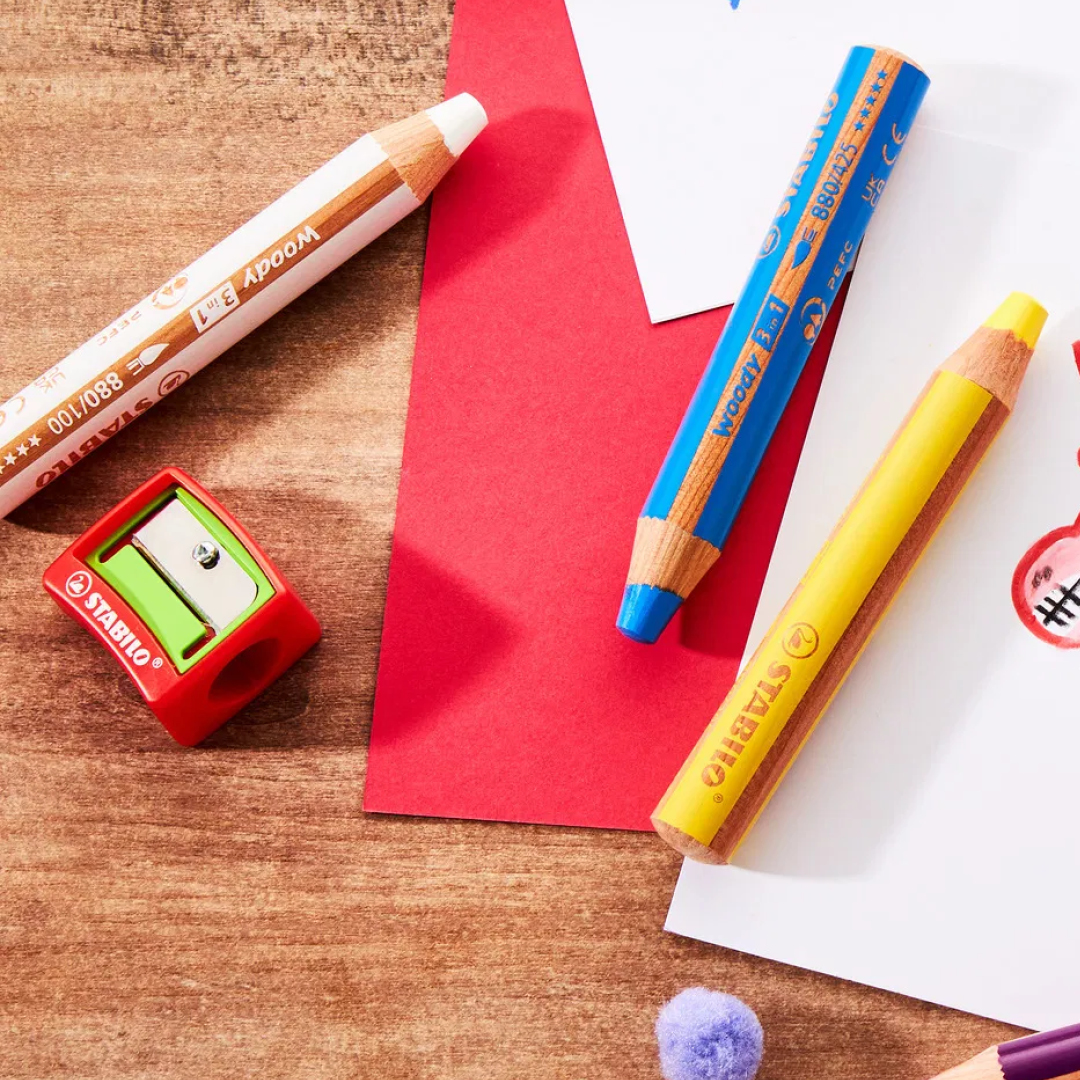
The type of pencil determines the sharpener you need
The most important factor in choosing a pencil sharpener, apart from pencil diameter, is the type of pencil you use. Graphite, coloured pencils, pastel pencils and crayons vary in hardness and fragility, which means different sharpener features are needed for each medium.
Sharpeners for graphite pencils
A sharpener for graphite pencils (regular pencils) can handle any standard pencil sharpener. Ideally, it should have a very hard and durable blade that produces a long, fine point. Many dedicated graphite sketchers and pencil enthusiasts invest in a good electric sharpener to achieve optimal precision.
Buying guide: Pencil sharpeners for graphite →
Sharpeners for coloured pencils
Coloured pencils need to be handled more gently. The level of care required depends on the brand, but in general, there are a few features to look for. Choose a model specifically designed for coloured pencils to avoid pigment clogging the mechanism. These sharpeners usually have larger holes and extra-sharp blades to handle the softer lead without crumbling. For pastel pencils, we recommend a high-quality sharpener suited for coloured pencils, or alternatively, a sharpening knife and sandpaper.
Buying guide: Pencil sharpeners for coloured pencils →
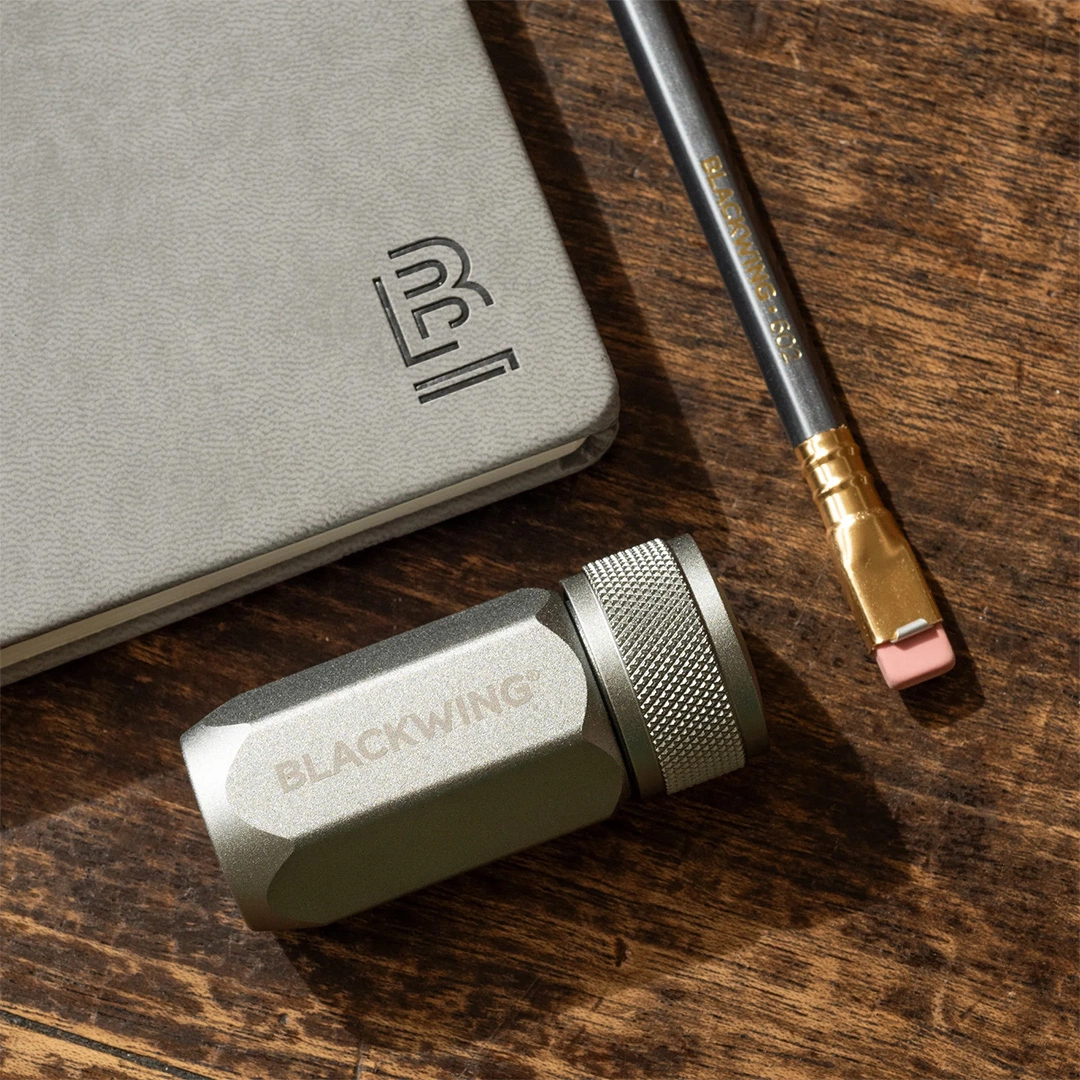
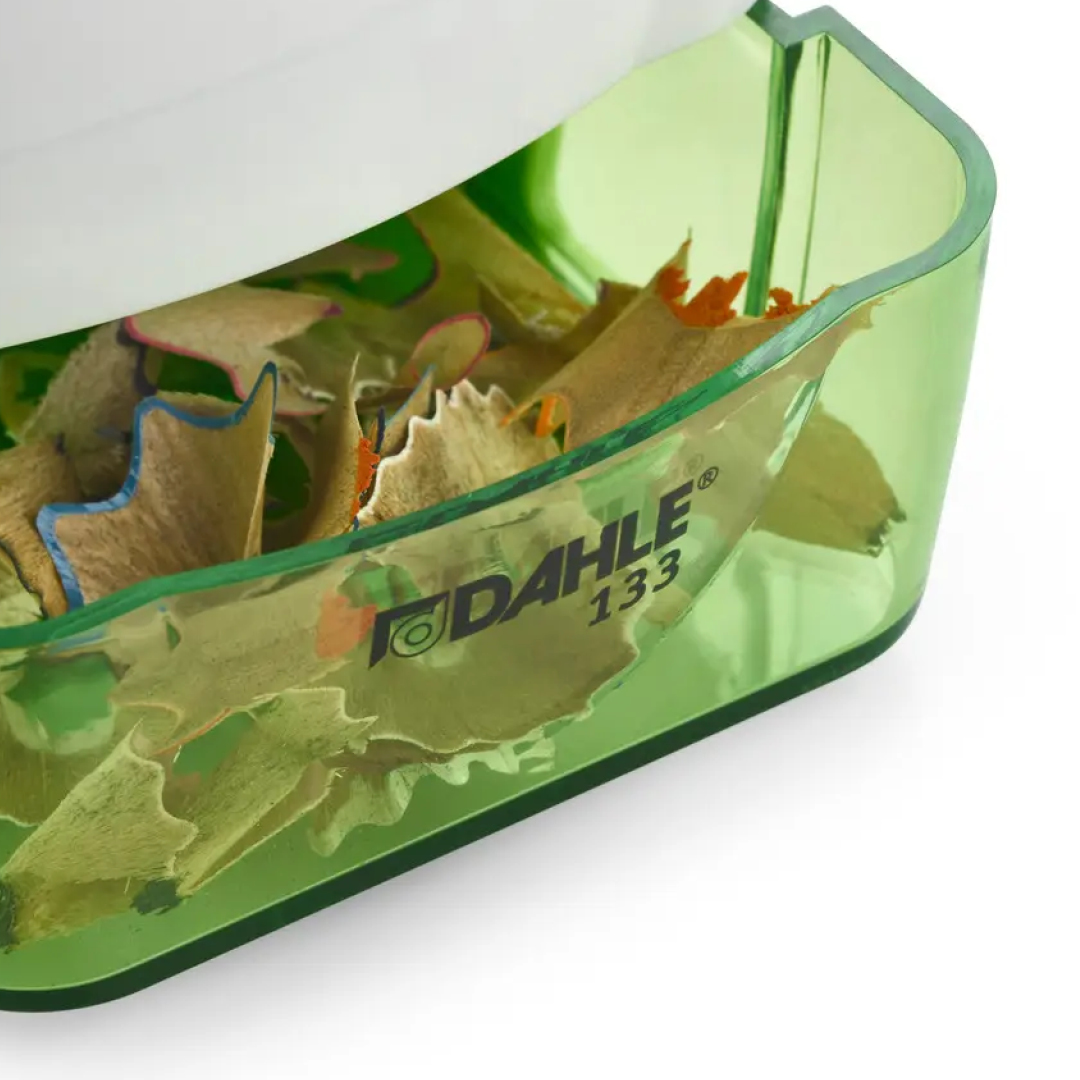
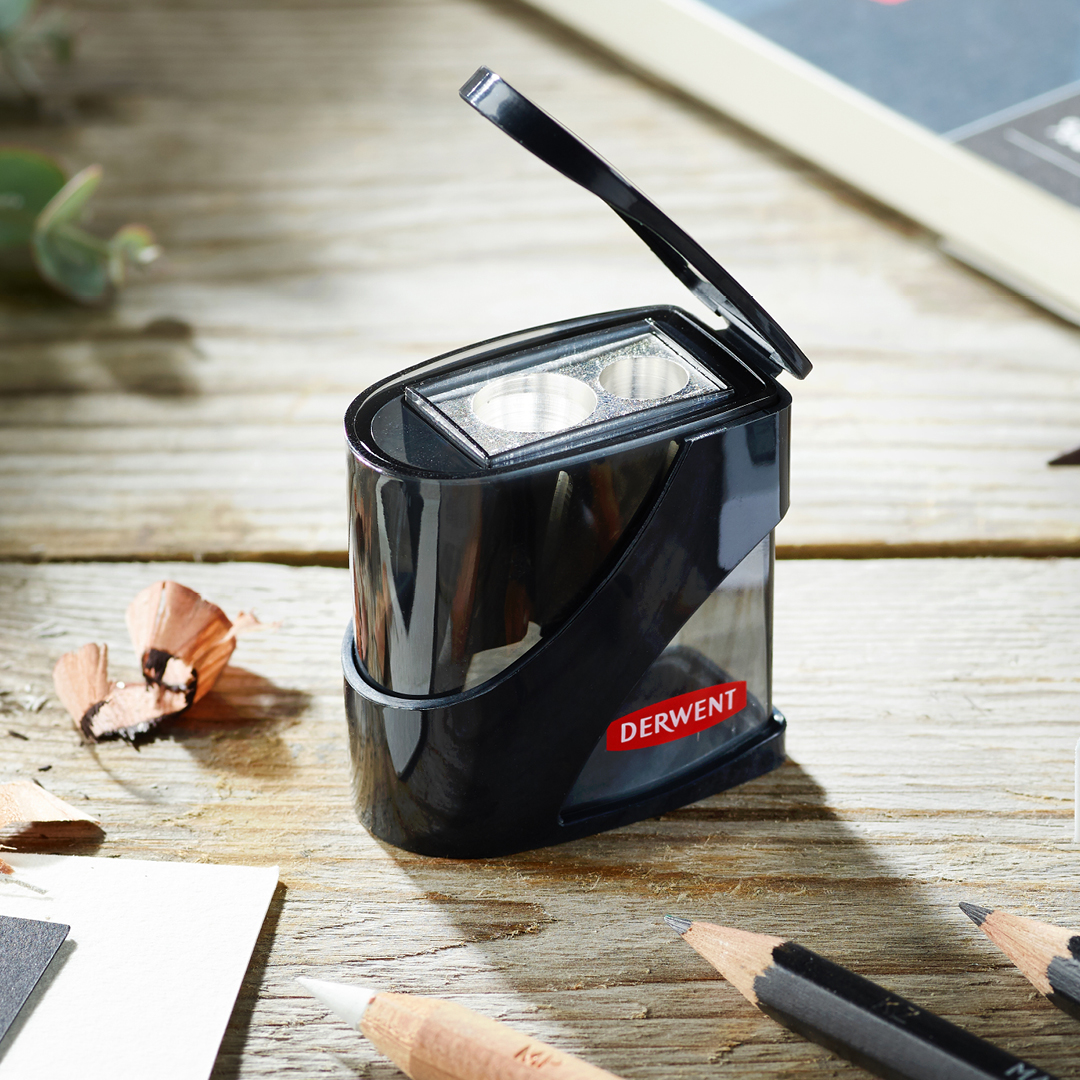
Pencil sharpeners for extra long points
Did you know there are pencil sharpeners designed to produce extra long points? These are commonly referred to as “Long Point” sharpeners and are mainly compatible with graphite pencils, which offer more stability than coloured pencils and crayons. Long points have both advantages and drawbacks. A long point needs sharpening less often, while shorter points offer more stability and are less likely to break.
Popular Long Point sharpeners
- KUM Sharpener Automatic Long Point
You first sharpen away the wood in the sharpener’s first hole. Then move the pencil to the next hole where the graphite is shaped to form the tip. The result is a very sharp and elongated point. This sharpener is small and compact with no shavings container. - Derwent Super Point Sharpener
A desktop model that creates an extra long point. High-performance helical steel blade with an automatic stop safety feature. - Blackwing One-Step Long Point Sharpener
The One-Step Long Point is a stylish, compact sharpener with a body made of durable machined aluminium. It creates a long, slightly curved point that is extra break-resistant and ready for anything.
Pencil sharpeners with smart features
There is a fascinating world of pencil sharpeners with special features that go far beyond the classic handheld version. Here are a few worth knowing about.
Desk models
For your studio or workspace, there are sturdy pencil sharpeners that can be fixed to the tabletop. These are often labelled as “desk models” in product listings.
Shavings container
If you want to avoid pencil shavings on the carpet, we recommend a sharpener with a shavings container. This practical feature collects the shavings in a small compartment, which you can then empty into the bin.
For left-handed users
You no longer need to twist your pencil the wrong way. The KUM Lefty Twin sharpener is designed especially for left-handed writers and artists.
Replacement blades
If you want your sharpener to last a lifetime, choose a brand like Blackwing or M+R. These brands offer replacement blades you can purchase when the original one wears out.
Automatic stop
The automatic stop function in modern sharpeners uses sensors to detect when the pencil has reached optimal sharpness and then stops sharpening. This clever system prevents both over-sharpening and waste. Brands that offer this feature include M+R and Derwent.
Two-step sharpeners
A smart model with two holes: one to sharpen the wood and expose the lead, and one to shape the lead precisely. Offers better control, less risk of breakage and a longer lifespan for your pencil.

How do you sharpen a pencil properly?
Use steady, light pressure and hold the pencil straight into the sharpener, not at an angle. With manual sharpeners, you get the best control by rotating the pencil rather than turning the sharpener. With an electric sharpener, gently insert the pencil and let the machine finish before removing it.
Want to learn more? Check out our full guide: How to sharpen a pencil →
 United Kingdom (GBP)
United Kingdom (GBP)
